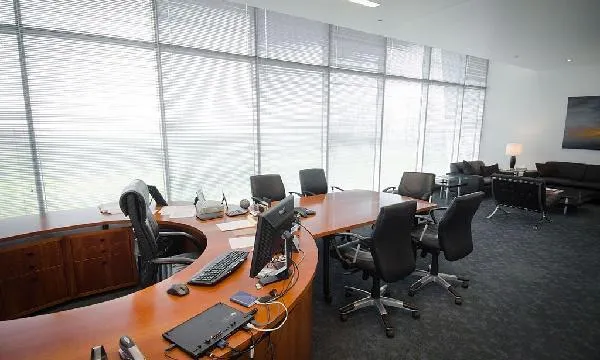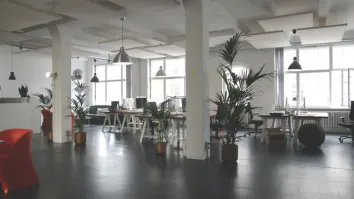
APAC office rents forecast to drop by up to 15% in 2020
Sydney saw the sharpest decline in Q2 2020 at 8.6%.
Cushman & Wakefield reveals in a recent report that office space demand has declined 45% q-o-q in Asia Pacific but remains in positive territory at the regional level so far.
Widespread rental decline across the region in Q2, with more to come in H2 2020. Rental decline for full year 2020 is currently forecast to range from 5% to 15%.
Here’s more from Cushman & Wakefield:
The pandemic has dealt a severe blow to corporate performance, which is echoing through real estate footprints as many seek to manage costs. It is inevitable therefore that markets across the region have softened and are expected to soften further; but it is important to remember that the majority of markets came into the pandemic in solid shape.
“Risk-off” stymies demand
From a corporate occupier perspective, it is very much “risk-off” and many non-business-critical decisions have been put on pause. New enquiries for space were down and regional net absorption has softened further from 10.1 million square feet in Q1 2020 to 6.9 million square feet in Q2 2020 – only 30% of the three-year rolling quarterly average.
Within this overall figure there have been some brighter spots. Indian markets recorded 3.7 million square feet of positive net absorption in Q2, albeit this was a 50% decline q-o-q and the softest result since 2013. More positively, Tier 1 markets in China returned to positive net absorption after a particularly soft first quarter. While these may only be considered mildly positive, they stand in stark contrast against the almost 23 million square feet of negative net absorption recorded across US markets, further highlighting the resilience of the region so far.
The pandemic has not affected all sectors equally. In India, the IT-BPM sector accounted for 43% of gross leasing in the quarter, up by eight percentage points y-o-y. Large proportion increases in space demand were also seen in the healthcare and pharmaceutical sectors. In Shanghai the top three industries driving demand were Financial Services, Professional Services and TMT. Notably these were domestic entities as MNCs remain cautious about the future.
Rental decline, not collapse
Landlords have acted swiftly to remain competitive in a softening market. Rental declines for new leases have been practically universal across Asia Pacific, either through face rent adjustments or increased incentives. Sydney saw the sharpest decline in the Q2 2020 at 8.6% with the average across the region at approximately 2% (Figure 6).

Although there was an initial rush from some tenants to secure rent abatements or waivers, unless mandated by enacted Government policy, their success in doing so has been patchy at best. That’s not to say landlords have not been amenable to working with tenants in financial difficulty, but that rental write-offs have not been common. Most tenants continue to occupy their space and pay their rent, resulting in only modest marketlevel rental declines in the face of weak sentiment.
Landlords should continue to focus on securing building and portfolio occupancy levels. At the start of the year, the region had a new supply pipeline of over 600 million square feet – most of it in China and India. Although much of the longer-term supply is likely to be delayed, we saw new completions in the region cause vacancy to tick up to 15.4% from 15.1%. As tenants look to consolidate their footprint, weaker tenant demand could exacerbate the effects of any further new supply.
However, corporates should tread carefully here. There is likely to be a glut of sub-lease space on the market as corporates pursue similar rationalisation strategies – available sublease space in Sydney has reached levels last seen during the GFC – and so achievable rents are likely to be well below former market levels. Additionally, many sub-markets remain especially tight. Any space surrendered now may not be easily regained in the future once the recovery gathers momentum.
Corporate strategy to drive market outlook
Although the region entered the pandemic in relatively robust shape, small pockets of weakness were emerging, which the pandemic has exposed and accelerated predicted trends from the start of the year. We expected neutral markets to become more tenant friendly and landlord friendly markets moving to a more neutral, or even tenant friendly position. This has unfolded more rapidly than expected. As at Q2 2020 just four markets in the Asia Pacific region remain landlord friendly, down from 11 at the start of the year and all four are reporting softening conditions.
Although there are green shoots of emerging economic recovery, CRE markets will lag this recovery and likely continue to soften over the next six months. We expect total rental declines for the year to average 5% but ranging up to 15% for markets that were already encountering headwinds prior to the pandemic. The vacancy outlook though is much more nuanced, reflective of the wide range of conditions between markets (Figure 7; Figure 8).

Space needs are evolving, driven by cost reduction and greater employee flexibility. The speed at which these workplace strategies can be deployed is dependent on several factors, but ultimately require the alignment of financial goals with corporate real estate strategy, HR policies and change management practices. Expect this to continue to play out over 2021 and beyond



















 Advertise
Advertise



